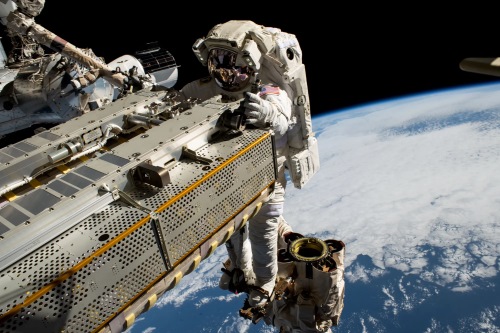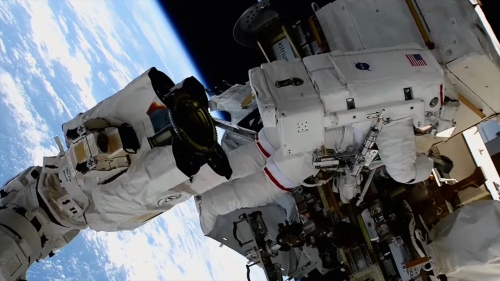NASA astronaut Sunita Williams has recently set a remarkable record during her extended mission aboard the International Space Station (ISS). The spacewalk was filled with significant achievements, including the removal of crucial radio communications hardware and the collection of microbial life samples from the ISS's exterior.
Key Highlights of the Spacewalk:
- Date of Spacewalk: January 30, 2025
- Duration: 5 hours, 26 minutes
- Mission Objectives:
- Removal of degraded radio frequency hardware
- Collection of microbial samples from ISS exterior
- Completion of essential maintenance tasks on the ISS
- Astronauts Involved:
- Sunita "Suni" Williams (9th spacewalk)
- Barry "Butch" Wilmore (5th spacewalk)
- Spacewalk Outcome:
- Successful removal of radio frequency hardware
- Williams surpasses Peggy Whitson’s record for total spacewalking time by a female astronaut, reaching 62 hours, 6 minutes
- The total time spent on spacewalks places Williams 4th on NASA’s all-time list
Williams' Record-Breaking Achievement:
| Astronaut | Previous Record | New Record | Total Spacewalk Time |
| Sunita Williams | Former NASA astronaut Peggy Whitson (60 hours, 21 minutes) | Surpassed Whitson’s record | 62 hours, 6 minutes |
Details of the Spacewalk:
- Preparation and Tasks:
- Time: 7:43 AM to 1:09 PM EST
- Objective: Removal of Radio Frequency Group (RFG) and microbial life sample collection
- The RFG removal task had been attempted in previous spacewalks (April 2023, and October 2023) but was unsuccessful due to technical issues.
- Finally, Williams and Wilmore succeeded with "a little bit of brute force" after several attempts.
- Microbe Search:
- Significance: First time NASA astronauts attempted to collect microbial samples from the exterior of the ISS to check for life in the vacuum of space.
- Findings: The collection of microbial samples may help in understanding how organisms survive extreme space conditions. Similar studies have been conducted by cosmonauts since 2014 on the Russian side of the ISS.
- Challenges:
- The mission's timeline extended beyond the expected duration due to technical malfunctions.
- Williams and Wilmore, who were originally meant to spend just one month on the ISS, ended up being stationed for several months due to spacecraft issues (Starliner mission delays).

Source: NASA
Williams' Remarkable Journey Aboard the ISS:
| Mission Name | Launch Date | Expected Duration | Actual Duration |
| Starliner Mission | June 2024 | 1 month | 7 months (ongoing) |

Source: Space.com
Sunita Williams: Spacewalking Legend
- Total Spacewalks: 9
- Ranked: 4th on NASA's all-time list for total spacewalking time
- Notable Records:
- The first person to complete a triathlon in space in 2012.
- Surpassed Peggy Whitson’s record for spacewalking time by a female astronaut.
Physical Impact of Extended Space Missions:
- Challenges After 7 Months:
- Williams faced a surprising medical challenge post-mission: difficulty remembering how to walk after prolonged exposure to zero gravity.
- Key Question Raised: With human exploration pushing towards missions to Mars, this phenomenon questions the long-term impacts of space travel on astronaut health and mobility.

Source: Space.com
Conclusion: A New Era for Space Exploration
- Williams' Achievement: A monumental milestone not just in terms of spacewalking records, but also for the future of long-term human space exploration.
- Future Outlook:
- As space agencies gear up for Mars missions, the insights gained from astronauts like Williams will be vital for understanding the long-term effects of zero gravity on the human body.
- With more spacewalks planned, future astronauts will continue to explore the unknown and push the boundaries of space exploration.
Comments
All Comments (0)
Join the conversation